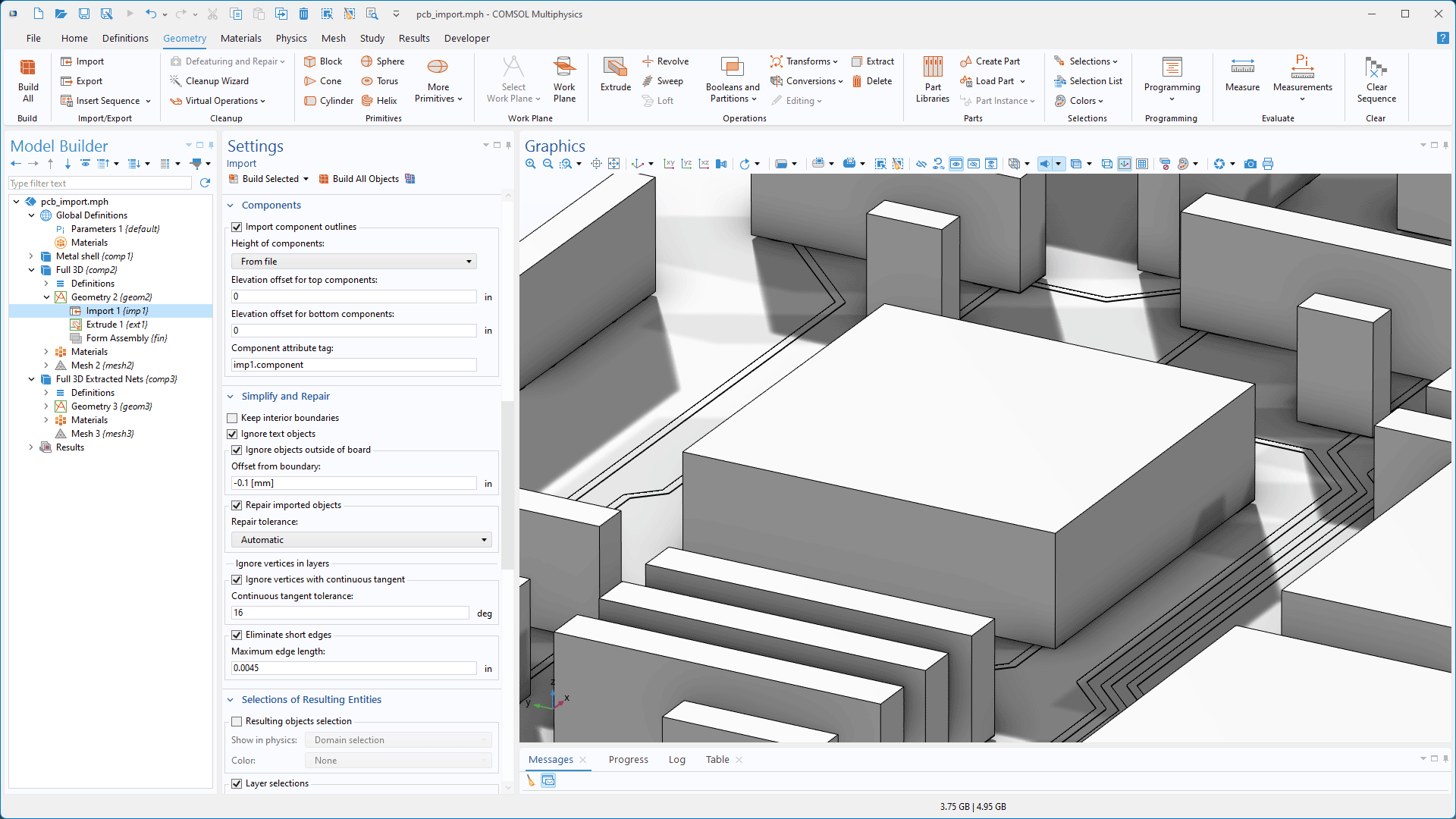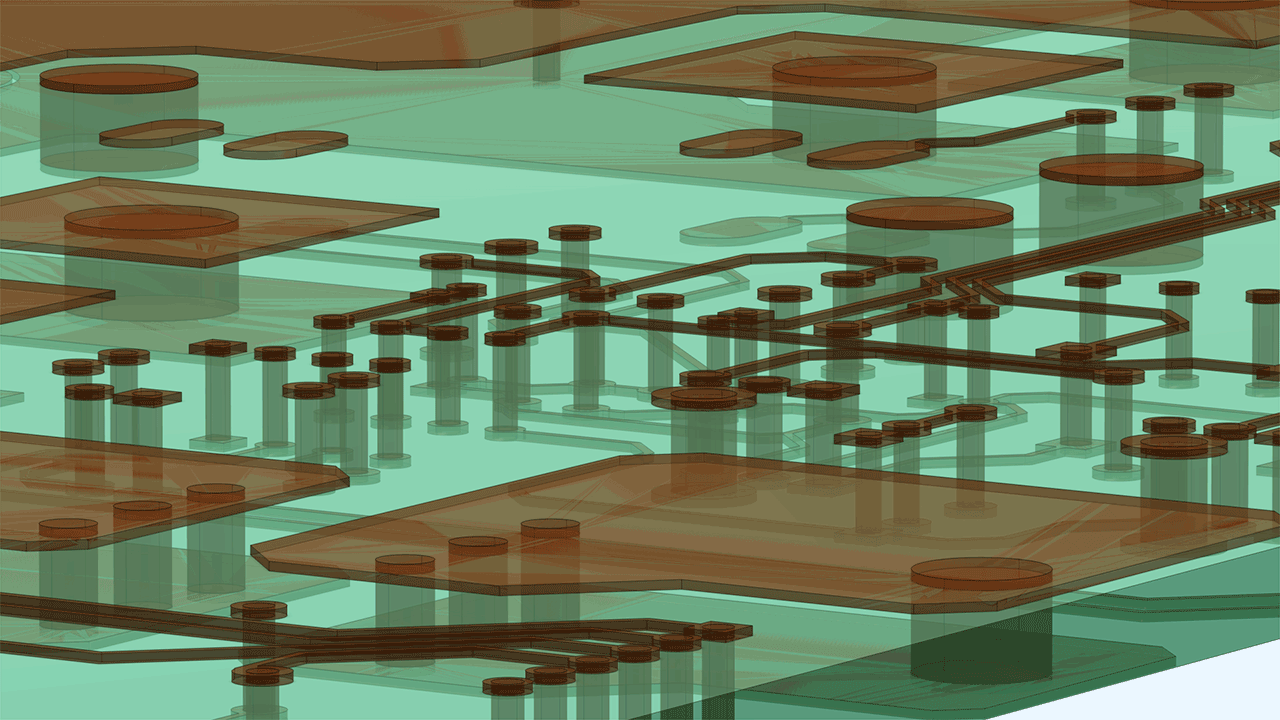ECAD Import Module Updates
Import of Component Outlines for PCB Import
When importing IPC-2581 and ODB++ files into COMSOL Multiphysics® version 6.3, simplified component geometries can be generated based on the component outlines in the files. Components can be represented as planar faces or extruded using height information from the file. These generated components are automatically assigned attributes for easy identification based on their names and package types. With the new Logical Expression Selection features, the attributes can be used in expressions to create selections.

Creating Plated Vias
The settings for importing IPC-2581 and ODB++ files now include a Plating thickness field, enabling the creation of domains for vias and plated holes with a specified copper plating thickness. Additional options provide control over whether to create core domains for different hole types, including vias, plated holes, and non-plated holes.
Improved PCB Import for More Efficient Simulation Setup in 3D
The new default options for importing IPC-2581 and ODB++ files make it possible to create a 3D board geometry suitable for simulation in one step. The import process unites copper and dielectric regions, integrates vias and holes as domains or voids, and automatically generates selections for copper and dielectric regions for easy material and physics assignment. These improvements streamline the workflow, eliminating the need for manual Boolean operations and selection steps and preparing the geometry for swept meshing using the Form Assembly method. The Importing and Meshing a PCB Geometry from an ODB++ Archive tutorial model has been updated to showcase these improvements.

Export to OASIS Format
With COMSOL Multiphysics® version 6.3, designs can now be exported directly to the OASIS format, a widely used standard for photomask design exchange. This new functionality streamlines workflows by removing the need for a separate translation step when sending prototypes to manufacturing. The export feature supports both 2D and 3D geometries. For 3D exports, users can select work planes to save as layers in an OASIS file.
Support for implementation of the ODB++ format was provided by Mentor Graphics Corporation pursuant to the ODB++ Solutions Development Partnership General Terms and Conditions.
